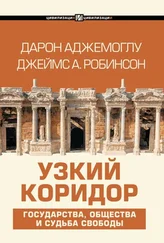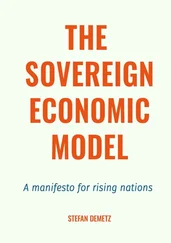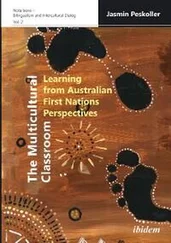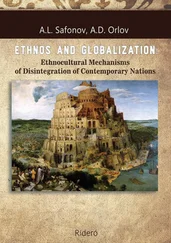The critical junctures that gave rise to feudal society were distinct, but they were not completely restricted to Europe. A relevant comparison is with the modern African country of Ethiopia, which developed from the Kingdom of Aksum, founded in the north of the country around 400 BC. Aksum was a relatively developed kingdom for its time and engaged in international trade with India, Arabia, Greece, and the Roman Empire. It was in many ways comparable to the Eastern Roman Empire in this period. It used money, built monumental public buildings and roads, and had very similar technology, for example, in agriculture and shipping. There are also interesting ideological parallels between Aksum and Rome. In AD 312, the Roman emperor Constantine converted to Christianity, as did King Ezana of Aksum about the same time. Map 12 shows the location of the historical state of Aksum in modern-day Ethiopia and Eritrea, with outposts across the Red Sea in Saudi Arabia and Yemen.
Just as Rome declined, so did Aksum, and its historical decline followed a pattern close to that of the Western Roman Empire. The role played by the Huns and Vandals in the decline of Rome was taken by the Arabs, who, in the seventh century, expanded into the Red Sea and down the Arabian Peninsula. Aksum lost its colonies in Arabia and its trade routes. This precipitated economic decline: money stopped being coined, the urban population fell, and there was a refocusing of the state into the interior of the country and up into the highlands of modern Ethiopia.
In Europe, feudal institutions emerged following the collapse of central state authority. The same thing happened in Ethiopia, based on a system called gult , which involved a grant of land by the emperor. The institution is mentioned in thirteenth-century manuscripts, though it may have originated much earlier. The term gult is derived from an Amharic word meaning “he assigned a fief.” It signified that in exchange for the land, the gult holder had to provide services to the emperor, particularly military ones. In turn, the gult holder had the right to extract tribute from those who farmed the land. A variety of historical sources suggest that gult holders extracted between one-half and three-quarters of the agricultural output of peasants. This system was an independent development with notable similarities to European feudalism, but probably even more extractive. At the height of feudalism in England, serfs faced less onerous extraction and lost about half of their output to their lords in one form or another.
But Ethiopia was not representative of Africa. Elsewhere, slavery was not replaced by serfdom; African slavery and the institutions that supported it were to continue for many more centuries. Even Ethiopia’s ultimate path would be very different. After the seventh century, Ethiopia remained isolated in the mountains of East Africa from the processes that subsequently influenced the institutional path of Europe, such as the emergence of independent cities, the nascent constraints on monarchs and the expansion of Atlantic trade after the discovery of the Americas. In consequence, its version of absolutist institutions remained largely unchallenged. The African continent would later interact in a very different capacity with Europe and Asia. East Africa became a major supplier of slaves to the Arab world, and West and Central Africa would be drawn into the world economy during the European expansion associated with the Atlantic trade as suppliers of slaves. How the Atlantic trade led to sharply divergent paths between Western Europe and Africa is yet another example of institutional divergence resulting from the interaction between critical junctures and existing institutional differences. While in England the profits of the slave trade helped to enrich those who opposed absolutism, in Africa they helped to create and strengthen absolutism.
Farther away from Europe, the processes of institutional drift were obviously even freer to go their own way. In the Americas, for example, which had been cut off from Europe around 15,000 BC by the melting of the ice that linked Alaska to Russia, there were similar institutional innovations as those of the Natufians, leading to sedentary life, hierarchy, and inequality—in short, extractive institutions. These took place first in Mexico and in Andean Peru and Bolivia, and led to the American Neolithic Revolution, with the domestication of maize. It was in these places that early forms of extractive growth took place, as we have seen in the Maya city-states. But in the same way that big breakthroughs toward inclusive institutions and industrial growth in Europe did not come in places where the Roman world had the strongest hold, inclusive institutions in the Americas did not develop in the lands of these early civilizations. In fact, as we saw in chapter 1, these densely settled civilizations interacted in a perverse way with European colonialism to create a “reversal of fortune,” making the places that were previously relatively wealthy in the Americas relatively poor. Today it is the United States and Canada, which were then far behind the complex civilizations in Mexico, Peru, and Bolivia, that are much richer than the rest of the Americas.
CONSEQUENCES OF EARLY GROWTH
The long period between the Neolithic Revolution, which started in 9500 BC, and the British Industrial Revolution of the late eighteenth century is littered with spurts of economic growth. These spurts were triggered by institutional innovations that ultimately faltered. In Ancient Rome the institutions of the Republic, which created some degree of economic vitality and allowed for the construction of a massive empire, unraveled after the coup of Julius Caesar and the construction of the empire under Augustus. It took centuries for the Roman Empire finally to vanish, and the decline was drawn out; but once the relatively inclusive republican institutions gave way to the more extractive institutions of the empire, economic regress became all but inevitable.
The Venetian dynamics were similar. The economic prosperity of Venice was forged by institutions that had important inclusive elements, but these were undermined when the existing elite closed the system to new entrants and even banned the economic institutions that had created the prosperity of the republic.
However notable the experience of Rome, it was not Rome’s inheritance that led directly to the rise of inclusive institutions in England and to the British Industrial Revolution. Historical factors shape how institutions develop, but this is not a simple, predetermined, cumulative process. Rome and Venice illustrate how early steps toward inclusivity were reversed. The economic and institutional landscape that Rome created throughout Europe and the Middle East did not inexorably lead to the more firmly rooted inclusive institutions of later centuries. In fact, these would emerge first and most strongly in England, where the Roman hold was weakest and where it disappeared most decisively, almost without a trace, during the fifth century AD. Instead, as we discussed in chapter 4, history plays a major role through institutional drift that creates institutional differences, albeit sometimes small, which then get amplified when they interact with critical junctures. It is because these differences are often small that they can be reversed easily and are not necessarily the consequence of a simple cumulative process.
Of course, Rome had long-lasting effects on Europe. Roman law and institutions influenced the laws and institutions that the kingdoms of the barbarians set up after the collapse of the Western Roman Empire. It was also Rome’s fall that created the decentralized political landscape that developed into the feudal order. The disappearance of slavery and the emergence of independent cities were long, drawn out (and, of course, historically contingent) by-products of this process. These would become particularly consequential when the Black Death shook feudal society deeply. Out of the ashes of the Black Death emerged stronger towns and cities, and a peasantry no longer tied to the land and newly free of feudal obligations. It was precisely these critical junctures unleashed by the fall of the Roman Empire that led to a strong institutional drift affecting all of Europe in a way that has no parallel in sub-Saharan Africa, Asia, or the Americas.
Читать дальше












